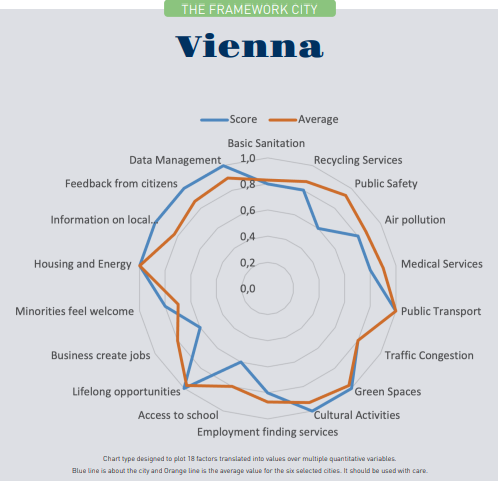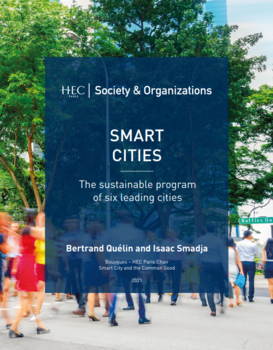Smart Cities - The Sustainable program of six leading Cities
e-Book
A model for today's urban centers, smart cities pave the way towards a more creative, inclusive and sustainable society.
With this new study, HEC Professor Bertrand Quélin and SASI graduate Isaac Smadja take us on a journey across the globe, stopping by six award-winning cities to help us better understand this new model. The 238-page eBook is produced within the Bouygues Smart City and the Common Good Chair.

For the cities of tomorrow, innovation is not limited to digital technologies. It also covers energy, transportation, new services, and new businesses. It is about operating better with fewer resources. For citizens, a better life in the city means an urban transformation that contributes to the common good.
Our analysis covers six cities: Amsterdam, Barcelona, Copenhagen, Singapore, Toronto and Vienna. Urban transformation requires three converging factors:
- A long-term vision;
- Business involvement in providing solutions and sharing value;
- Active collaboration with different stakeholders.

Amsterdam is an example in terms of governance. Its ability to collaborate – an inherent trait of a smart city – with private partners is what makes it unique.
4 private partners at the heart of the smart city’s foundation.
When it comes to decision making, Amsterdam wields a strong platform called “Amsterdam Smart City” where local actors are interconnected and put forward projects.170+ collaborative projects developed by local residents, the City Council, associations & businesses.
Mobility is a challenge for the city of Amsterdam: Taking into account its historical center, its configuration as a city with canals, but highly extended as a metropolis.
The inter-modality and cohabitation of the different means of transport is a difficult challenge.
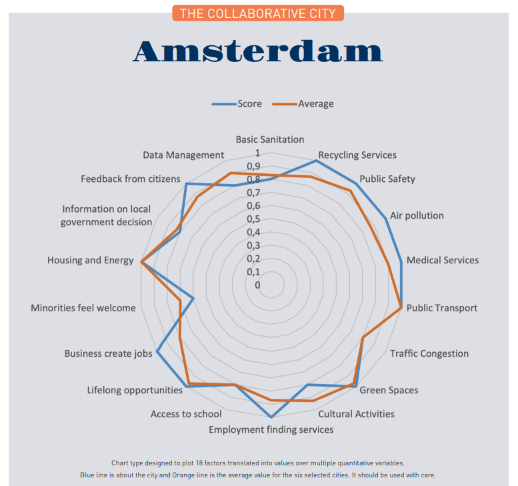

Barcelona is using technology to serve its residents and face its challenges, such as recurring droughts. Its collaboration with Starlab, implementing a sensor-based technology, allows remote control and anticipation of the water system through an online platform.
Such system has enabled the city to lower its water bills by almost 25 percent through reduced water usage.
Policy priorities in Barcelona have had a considerable effect on job opportunities, especially the Information and Communication Technologies sector.
20,000+ new jobs in the ICT sector in a single year, from June 2020 to June 2021.
Barcelona is quickly becoming the melting pot of new tech ideas and companies.
12,500+ tech companies have emerged in recent years, 50% of which did not exist in 2015.
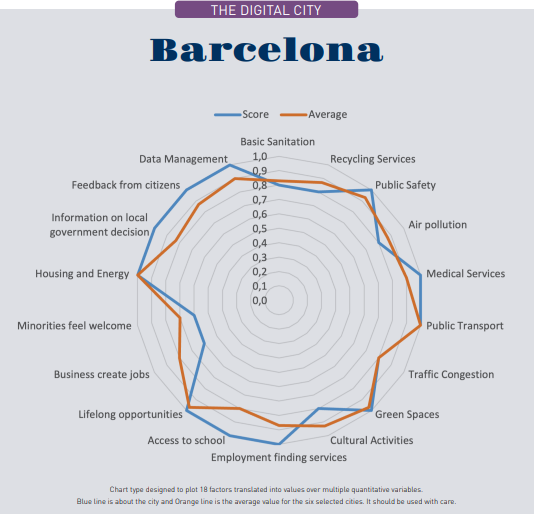

Copenhagen stands out with its record-setting Climate Plan, aiming at:
Carbon neutrality by 2025.
Thanks to decades of ambitious energy policy and development in the green sector, Copenhagen has turned renewability into a stronghold of its economy.
25,000 people across 6,000 companies working in the green sector.
The city adopted a user-centric, green mobility plan that evolves quickly through the objectives of the Copenhagen Climate Plan.
750,000 public transportations users in the city
The city’s ”green mentality” is now part of everyday life in Copenhagen. It has developed a strong bond with its population who thus are willing to offer their time for its development.
1 out of 4 in Copenhagen would consider doing volunteer work in green areas.
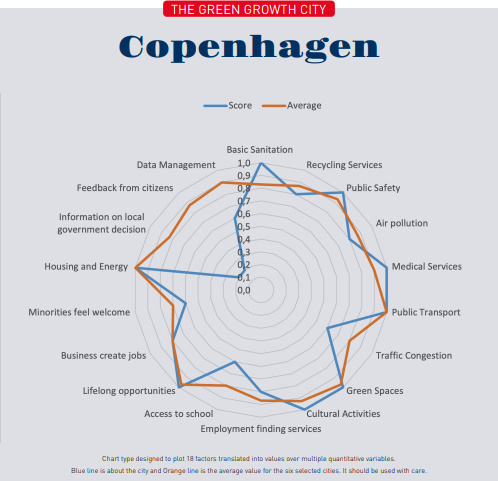

Singapore leads the concept of Smart Cities. It embodies many of its core features such hyperconnectivity and a wide use of technology to answer its citizens expectations.
Number 1 in the Worldwide Smart City Ranking, rated AAA in 2019.
Singapore is on the verge of a massive digitalization process and tries to make a difference through hyperconnectivity as well as computing technologies.
1.5 billion euros invested through the Smart Nation Initiative.
Singapore is among the first governments to open to the public the data it collects, building trust among its citizens.
Two thirds of Singapore citizens feel open data increased their trust in the authorities.
A major improvement to Singapore’s sustainability was the installation of the Hyflux desalination plant. Such installation is one of the city’s distinctive features.
10% of daily water needs extracted from salt water.
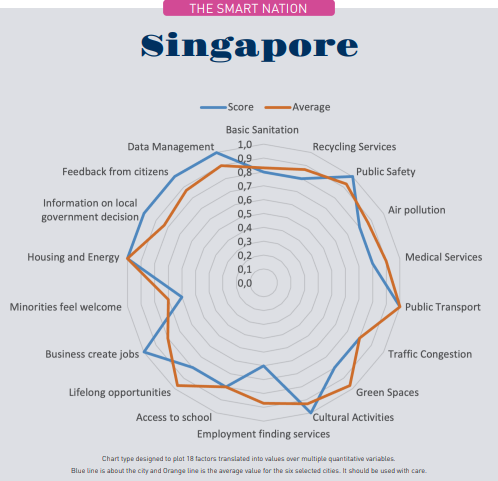

Toronto is a specificity among the six cities, given the fact that its Google component is not an undergoing project. Indeed, it has been cancelled after the COVID-19 pandemic and subsequent delays as well as economic consequences. The Toronto chapter is more of a questioning on the value of such endeavors. I thus chose to include stand-out ideas proposed by Sidewalk Labs (the Alphabet/Google subsidiary) that could stir up thought and inspiration for other Smart Cities.
The “smart chute” device
Calculation of waste for each building unit, in synergy with a “pay-as-you-throw” program. Building tenants unlock waste chutes using an app, so that digital devices measure the waste’s volume.
Smart heated sidewalks
The project included a smart heated sidewalk system that would trigger before snowstorms and low temperatures. Such system improves mobility and safety for pedestrians as well as various types of transit.
Dynamic curbs & adaptive traffic signals
Lighted pavements to indicate available space for pick-ups and drop-offs as well as real-time information publishing regarding availability and pricing. All this information is accessible through an app. Concerning adaptive traffic signals, it provides an analysis of drivers, cyclists and pedestrians speed to offer fluid traffic signalization.
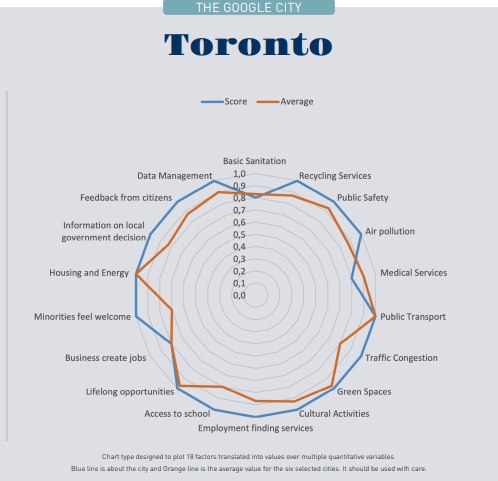

Vienna’s unique strategic approach, away from growth and focusing on maintaining its present quality of life in the future, is what makes it a state-of-the-art Smart City.
Number 1 on the Roland Berger City Strategy Index in 2017 and 2019.
Vienna has had a Smart City approach for a hundred years ! Having placed water quality and efficiency at the core of its yearly investments, the city meets the highest levels of quality.
30 million euros invested each year in the city’s water system.
The Austrian capital shows great ingenuity in its development. Its use of synergy has proven efficient and useful.
360 households powered by trains’ braking energy.
